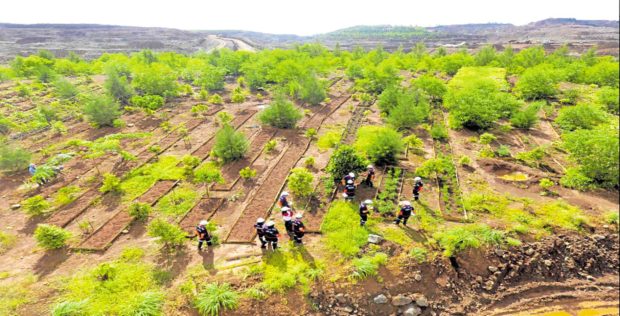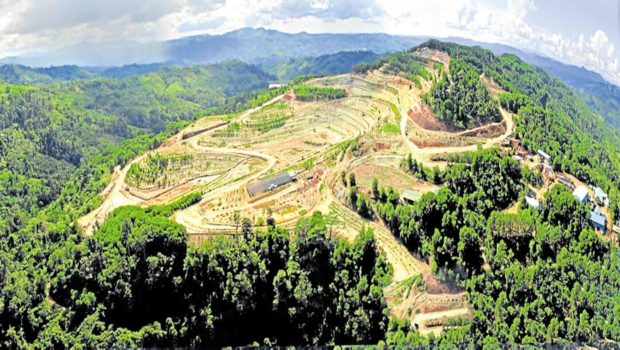Extracting minerals from the ground can either be a blessing or curse to the people and the environment. Metals are widely used in our daily lives—from buildings, cell phones, jewelry to transportation. From the macroeconomic perspective, mining can play a vital role in spurring Philippine socioeconomic development as it can generate more employment and boost government coffers.
On the other hand, exploring, operating and maintaining mine sites can adversely impact our environment. Mining can affect not only local communities but also pose health risks to the general public if such an activity is undertaken in an irresponsible way.
The government is counting on the mining industry to help shore up the Philippine economy from the deep recesses of the pandemic. Precious metals are lustrous and the Marcos administration is hoping that the huge potential of this sector will illuminate the path toward the country’s economic recovery and long-term growth. The Philippines, after all, is one of the world’s richly endowed countries in terms of mineral resources with considerable deposits of gold, copper and nickel. Metal prices in the global market are on the uptrend, even reaching record price highs in the previous year.
The Philippines is estimated to have about $1 trillion worth of untapped copper, gold, nickel, zinc and silver reserves, only 5 percent of which have been exploited.
The Mines and Geosciences Bureau (MGB) has yet to release the projected metal production for 2022. In the three quarters ending September, the value of metal production expanded by 29.21 percent to P175.61 billion. The MGB says the sector has been able to sustain its growth trajectory due to bullish prices of nickel ore and gold along with the higher output of gold, silver, chromite and iron.
To ramp up the development of the industry, the government vowed to clear the road blocks—the moratorium on open-pit mining and new mining projects, to name a few (which were lifted at the tail end of the previous Duterte administration)—that had stymied its growth in the past. The Department of Environment and Natural Resources (DENR) has started a comprehensive review of the laws and policies governing the mining sector and is hoping to complete the process in six months or so, in the hopes of building technical capacity to support this particular direction.
“We have already acknowledged this as a priority and therefore, we are going to be undertaking not just a review of the existing policies and laws, which are somewhat dated; some of them were [enacted] in the ‘90s, [like] the People’s Small-Scale Mining Act of 1991, the Philippine Mining Act of 1995,” says Environment Secretary Maria Antonia Yulo-Loyzaga.
The agency also wants to ensure the social and physical advances in science and technology as well as the Philippines’ development context are taken into account.
Ready to grow
Mining companies have lauded the government’s pronouncement on the revitalization of the industry.
Chamber of Mines of the Philippines (COMP), an association of the largest mining, quarrying and mineral processing companies in the country, says it is ready and willing to contribute to the country’s postpandemic recovery efforts, provided the industry will be allowed to grow and flourish, and policymakers will enable them to achieve the sector’s full potential responsibly and sustainably.
“However, to truly revitalize our industry—which includes attracting the right investments in mining and encouraging the building of enormously expensive mineral processing facilities and manufacturing plants for electric vehicles and for renewable power projects—the industry needs: full government support in terms of stable mining and investment policies that do not change mid-stream, lower power costs, infrastructure, harmonized local and national laws, a fiscal regime that considers the Philippines’ competitiveness vis-à-vis other mining jurisdictions, and incentives,” says COMP chair Michael Toledo in an email interview with the Inquirer.
“One area that would provide a big boost to our industry and our country is the enactment of a responsive mining fiscal regime that would allow mining to provide a consistent revenue stream for our nation’s coffers, a fair return for investments, as well as continued benefits for host communities in both good times and bad,” adds Toledo.
More optimistic
The group hopes that the government will address their concerns and provide support to the sector, allowing them to help meet the critical materials requirements of energy transition.
Toledo says they share the administration’s optimism about mining prospects given the global thrust to decarbonize, leading to the introduction of new technologies that push demand for raw materials needed to produce electric vehicles and undertake renewable energy projects.
Although commodity prices are projected to slide in the near term, Toledo says experts predict commodity prices to increase in the medium-term compared with prepandemic levels.
Philippine Nickel Industry Association (PNIA), a nonstock nonprofit association organized to promote and develop the domestic nickel mining industry, says the Philippines will gain from the steady global demand for pure nickel as manufacturing sectors shift their production to support the boom in the electric vehicle industry.
“The Philippines is poised to benefit from the thrust in production of manufacturing sectors; however, before we can even concretize plans on putting up the infrastructure needed for proposed value-adding processing plants, there is a need to involve the government in terms of fiscal incentives for investors as well as enticing mining policies and regulations,” PNIA president Dante Bravo tells the Inquirer in an email.
“In spite of this steady demand, we believe it will take a while before the exports return to prepandemic levels as there are considerations out of our control that may affect our nickel production as well as overall demand, such as current global inflation, high interest rates, rising electricity and fuel costs exacerbated by the ongoing Russia-Ukraine war, unfavorable weather, rising freight charges, and supply chain disruptions,” Bravo adds.
Hoping to capitalize on these prospects, one of the PNIA’s key priorities this year is discussing the feasibility of building a processing plant with government stakeholders and economists.
“We must first ascertain the country’s nickel reserve before we undergo such an undertaking of putting up processing plants, particularly in ensuring quality and quantity of output, and future-proofing the gargantuan venture,” says Bravo.
On the sidelines of the World Economic Forum meetings in Davos last month, Glencore, one of the largest and globally diversified natural resource companies in the world, announced plans to invest in mineral processing operations in the Philippines.
“They see the Philippines as a potential partner to process nickel and copper resources responsibly and sustainably for use in electric vehicle batteries and energy storage units, among others,” says Communications Secretary Cheloy Velicaria-Garafil. INQ



